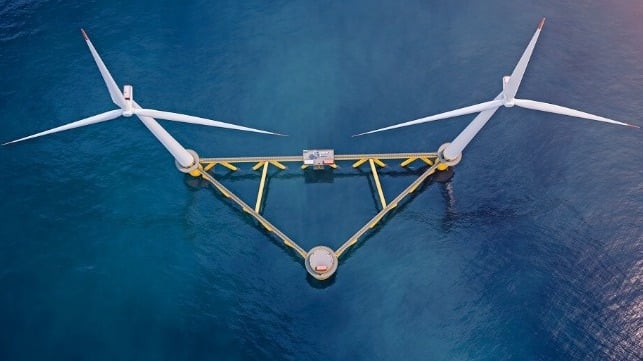Floating Offshore Wind Developers Eye Growth Opportunities in Italy

Floating offshore wind startup Hexicon has started a joint venture with renewable power company Avapa Energy to bring Hexicon's twin-turbine floating foundations to Italian waters.
Italy stands to benefit from EU Green Deal project funding, Hexicon said, making it a natural market for offshore wind development. As Italy begins a program of regulatory change to enable offshore wind farm installation, Avapa and Hexicon will look for suitable sites and prepare for permitting opportunities.
"An important part of our business model is to enter new and promising markets as early as possible and to establish both our project development skills and technology together with local partners," said Marcus Thor, the CEO of Hexicon. "We have found a perfect partner in Avapa Energy, and with AvenHexicon we are looking forward to support Italy in its expansion of fossil-free electricity production."
Floating offshore wind will be an important component of a future zero-carbon energy mix, as the majority of the world's offshore wind resources are located in waters too deep for bottom-fixed foundations. Floating towers come with their own challenges, including periodic mooring maintenance, and their initial cost is higher than the expense for bottom-fixed projects.
Hexicon's approach to floating offshore wind is a bit different. The platform is centered on a single-point mooring, allowing the structure to rotate to face the wind. It has two outward-leaning towers, doubling the turbine count per mooring location. The company says that this helps save cost on installation by reducing the amount of steel per MW of capacity, reducing the number of inter-array cable lay runs, and reducing the number of platform tows and installations. The platforms and their canted towers are unique, but they use standard commercial turbines.
At present, Italy has no operational offshore wind farms; construction on its very first facility, the Taranto project, began in September. However, there is considerable market interest: In November, Italy’s Ministry of Ecological Transition said that it had received 64 expressions of interest in building floating offshore wind farms off the coast. The interested parties include big industry names, like Copenhagen Offshore Partners, Eni, Fincantieri, Fred. Olsen, RWE, Principle Power, Saipem, Falck Renewables and Vestas, among others.
Some of these expressions are already advancing. In December, Falck announced that it would partner with BlueFloat Energy on a proposal to install 90 floating turbines off the coast of Lecce, Italy. Compared to many floating proposals, he project would be relatively close in, with turbines located a minimum of seven nm offshore.
